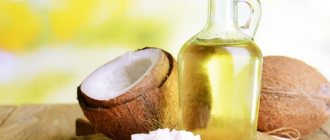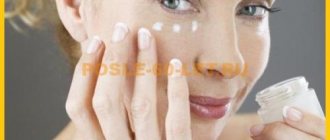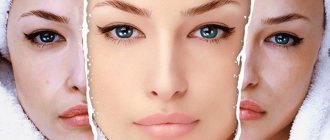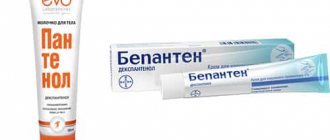Dermatitis is a complex of inflammatory skin diseases. It develops under the influence of external and internal factors and can affect the skin at any age, including newborns. It is especially difficult to select medications for the treatment of infants, since many drugs are contraindicated for children. Pediatricians often recommend that mothers use Bepanten for atopic dermatitis. Let's figure out how this tool is used.
Therapy for dermatitis is a set of measures, including the use of external treatments. One of the drugs that soothes irritated and inflamed skin is Bepanten ointment.
This remedy is widely used for diaper rash and diaper dermatitis in infants; with its help, seborrheic dermatitis can be overcome. Let's figure out what kind of drug this is and how to use it correctly.
Composition and release form
Bepanten ointment 5%, 30g in a tube; Bepanten cream 5%, 30g in tube; Bepanthen lotion 2.5%, 200 ml in a bottle; Bepanten plus cream 30g in a tube.
Bepanten 1g ointment: Dexpanthenol – 50 mg. Bepanten 1g cream: Dexpanthenol – 50 mg. Bepanten 1g lotion:
Dexpanthenol – 25 mg. Bepanten plus 1g cream: Dexpanthenol – 50 mg; Chlorhexidine dihydrochloride – 5 mg. Pharmacological group: Drugs that primarily affect tissue metabolic processes Vitamins and their analogues
The first manifestations of atopy usually occur in infancy. The child's skin becomes dry and flaky. Cracks and weeping may appear in the folds of the arms and legs, in the neck folds and other areas of the skin, which easily become infected and inflamed. Regular care using special regenerating agents that will accelerate the regeneration of the skin will help prevent inflammation, reduce the intensity of discomfort and restore the skin of a person who suffers from skin manifestations of atopic dermatitis. For children from birth and adults who have been diagnosed with atopic dermatitis, dexpanthenol-based products, for example, Bepanten, are suitable. For atopic dermatitis, the use of various products from the Bepanten line may be indicated, for example, Bepanten Plus, if there is a high risk of skin infection.
Does Panthenol ointment have any analogues?
This drug for local use has a lot of synonymous drugs. Synonyms are drugs that have the same active ingredient.
Dexpanthenol is the basis of such drugs as
- D-Panthenol
- Dexpanthenol
- Happyderm
- Bepanten
- Korneregel
- Pantoderm
All of these are synonymous drugs, or trade (brand) names of products with the same active ingredient and the same effect. In common parlance they are called analogues.
True analogues are drugs with a similar effect, but with different active ingredients. From this pharmacological and pharmaceutical point of view, the best analogues of Panthenol ointment are, for example:
- Vishnevsky ointment
- Streptoplaven,
- Levomekol
- Solcoseryl
pharmachologic effect
The active ingredient of Bepanten, dexpanthenol (provitamin B5), is actively adsorbed by skin cells. When it enters epithelial cells, dexpanthenol is transformed to form pantothenic acid. Actually, vitamin B5 (pantothenic acid) determines the effect of the drug Bepanten. Pantothenic acid is an integral part of coenzyme A and is actively involved in the processes of acetylation, acetylcholine synthesis, stimulates the regeneration of skin and mucous membranes, normalizes cellular metabolism, accelerates mitosis, and increases the strength of collagen fibers.
Bepanthen is quickly absorbed and transformed in the body, replenishing endogenous reserves of pantothenic acid. It has a regenerating, moisturizing and mild anti-inflammatory effect on the skin. The drug can be used on any area of the skin, including for the treatment of weeping wounds, unprotected areas of the skin (for example, facial skin) and areas covered with hair. When released into the blood, pantothenic acid binds to plasma proteins, mainly albumins and B-globulins. Pantothenic acid is excreted unchanged in urine and feces.
I am prone to skin reactions to citrus fruits, chocolate and some other types of foods. Unfortunately, my youngest daughter “inherited” from me a tendency to allergic skin rashes. Unlike me, a child’s skin begins to “bloom” regardless of the quantity and quality of food consumed. The pediatrician who has been seeing my children since birth diagnosed my youngest daughter with atopic dermatitis. Such a disease is subject to treatment with a stretch, since it relates to the characteristics of the immune system. In the warm season and during periods when the daughter is absolutely calm, for example, on vacation, outside of school and stress, her skin becomes soft and smooth. However, with the onset of the heating season, as well as before a test or during severe mental stress, the daughter’s face, neck and shoulders become covered with red, irregularly shaped stains and begin to itch. The skin can also “deteriorate” after eating regular food, for example, chicken broth or tomato sauce. In general, it is believed that the condition of atopic skin cannot be predicted. Doctors prescribed various diets for their daughter, which only helped temporarily. Currently, I give my child antihistamine drops during periods of exacerbation of skin rashes and treat the skin with Bepanthen, since it does not contain hormones and is a vitamin for skin healing. The cream softens the skin well, itching and inflammation are reduced. I hope that with age this problem in my daughter will become less pronounced.
In what cases are hormonal ointments for the skin prescribed?
The effectiveness of hormonal drugs depends on what conditions their active components are expected to fight. The clinical picture is determined for the purpose.
Most often, hormonal ointments are prescribed for:
- skin itching;
- psoriasis;
- allergies.
For itching
This symptom may indicate the presence of the following diseases:
- allergy;
- lichen, pediculosis;
- cholecystitis;
- hepatitis;
- diabetes;
- neuropsychological conditions.
Let's celebrate! Hormonal drugs are prescribed in case of localized itching, while generalized itching requires the use of ointments with antihistamines or anesthetics.
For allergies
An allergic reaction on the skin occurs when histamines arise from mast cells, and therefore hormonal ointments that have an antiallergic effect are prescribed.
Then the mast cell membranes are stabilized, and the topical corticosteroids included in the ointment prevent the inflammatory process.
These 2 actions of hormonal ointments make them indispensable in the fight against such manifestations as:
- photodermatitis;
- allergic neurodermatitis;
- acute form of skin allergy;
- atopic dermatitis;
- erythema that occurs when using certain medications;
- a chronic form of the rash, recurrent and unresponsive to non-hormonal therapy.
For psoriasis
This pathology is chronic and has no specific etiology. But according to most scientists, psoriasis occurs due to the work of an autoimmune mechanism. The disease is necessarily characterized by remissions and exacerbations.
Complex therapy consists of:
- photochemotherapy;
- immunosuppressive drugs;
- local therapy, involving the use of, incl. and hormonal ointments.
Good to know! Since the main drugs aimed at treating psoriasis act only locally, corticosteroids are widely used in the treatment of this disease.
Indications for use
Cream and ointment Bepanten
For regular skin care of newborns, for the prevention and treatment of diaper rash, skin inflammation and diaper dermatitis in infants;
For regular preventive care of the mammary glands, treatment of cracks and irritation of the nipples during lactation;
For treating damaged and irritated skin of the entire body after exposure to sunlight, chemicals, and other irritants;
To accelerate the healing of skin microdamages: burns and scratches;
For the treatment of chronic skin ulcers, bedsores, anal fissures, cervical erosion, as well as after skin transplantation.
The product for treating skin for atopic dermatitis “Bepanten”, reviews of which I studied on the forums, really helps well with skin rashes in children. My child has had hereditary atopic dermatitis since birth, so I have been puzzled by the question of choosing a safe and effective remedy for the treatment and prevention of allergic rashes from the first days of motherhood. This product can be used by both pregnant and lactating women, and babies from birth, since it does not contain fragrances, antibiotics, antihistamines or hormones. The product nourishes, moisturizes and restores the skin, is easy to apply and quickly absorbed. By the way, Bepanten can also be used under a diaper as a prevention of diaper dermatitis. Such a cream based on dexpanthenol suited us and was very useful already in the maternity hospital.
Lotion Bepanten
For skin care after sunbathing and water procedures;
For cracks, abrasions and scratches to accelerate healing and regeneration of the skin.
Cream Bepanten plus
For the treatment of wounds at risk of infection, including cuts, scratches, insect bites, and various skin inflammations.
How to treat dermatitis on the face
Facial dermatitis is an inflammatory reaction of the skin that is expressed by red spots. Unbearable itching forces a person to comb the skin, which leads to a deterioration in their appearance.
The disease develops due to the influence of various factors. It can be a holistic allergic reaction or a separate sign of pathology. The disease is divided into allergic, contact, atopic, seborrheic and oral dermatosis.
Have you been trying to get rid of PSORIASIS for many years?
Head of the Institute: “You will be amazed at how easy it is to get rid of psoriasis by taking it every day...
Read more "
Allergic type of disease
According to the allergic type, dermatitis develops due to sensitization of the body when it has to react to components of incoming food or substances touching the skin. At a mild stage, the disease is diagnosed by bright red spots, rashes, and swelling. In advanced conditions, the picture is complemented by the following symptoms:
- weakness;
- headache;
- tearfulness.
Scars may take the place of the blisters. The process is characterized by a slow flow. The problem on the face appears a few days after contact with the irritant.
All signs of dermatitis on the face are shown in the photo; its treatment with ointments and creams will be described below.
To develop a therapeutic course against allergic dermatitis, specialists take skin tests to facilitate the identification of the allergen. Creams for treatment are selected from those drugs that have antihistamine properties. Facial ointments are prescribed to eliminate symptoms and strengthen local immunity.
Among the desensitizing medications, a 10% solution of calcium gluconate is indicated - it is administered intravenously. The patient is also asked to switch to a diet excluding foods containing potential allergens. Cosmetic facial care products are also selected by a doctor. It is recommended to wash with special solutions.
Contact dermatitis
This form of the disease is manifested by tissue inflammation caused by allergens and irritants. They can be household chemicals, products containing nickel, medicines, latex.
The path of pathology development is simple:
- the irritant hits the face;
- an allergic reaction to contact occurs;
- the inflammatory process starts.
A striking symptom of contact dermatitis is severe itching, redness of the skin, peeling and blistering.
How to treat such dermatitis on the face? Once an allergen has been identified, it should be excluded from contact with the skin. Dermatologists prescribe Erius, Zyrtec, and Telfast among antihistamines. They are consumed orally or applied topically. Erius is prescribed at the rate of 1 tablet per day. The drug is suitable for the treatment of adults and children over 12 years of age.
The condition of skin covered with ulcers and blisters is improved with the help of corticosteroids. The problem is well solved by Advantan cream and Lokoid ointment. Use them once a day, lubricating the affected areas on the face for 3 to 5 days.
Chamomile and linden blossom are used in the fight against facial dermatitis. Take 4 tbsp of both components. l. and pour over a liter of boiling water. Boil the mixture over low heat for about 20 minutes, then leave for 4 hours. The product is filtered and used warm to wash the face.
Atopic form of dermatitis
Atopic dermatitis on the face is a common pathology known as eczema. Science has not been able to reveal the exact causes of its occurrence, so the disease develops into a chronic form.
Typical symptoms of facial atopy are:
- itching;
- burning;
- blistering;
- redness;
- peeling of the integument;
- thinning and breaking of eyebrows;
- deepening of the folds on the eyelids.
Mechanical impact on the problem area triggers the process of inflammation, leading to roughness of the skin. Scratching the skin tissue can cause an infection in the body, which will make the picture more vivid.
To treat atopic dermatitis on the face, doctors prescribe special antihistamine creams and ointments:
- Elokom, which relieves swelling and provides an antipruritic effect. In the form of an ointment, it is used to eliminate peeling, and in the form of a cream - for inflammatory infiltration.
- Afloderm is an antipruritic anti-inflammatory ointment that constricts blood vessels and reduces swelling. Treatment is carried out for 3 weeks.
- Trixera is a cream that reduces the hypersensitivity of the facial skin. To moisturize and restore the lipid layer, apply it 2 times. per day. The skin must be pre-cleansed.
- Solcoseryl is a gel and ointment that heals irritated tissues and accelerates recovery processes in the depths of inflamed areas. Skin treatment is carried out 1 - 2 times. in a day.
To normalize the emotional background, dermatologists prescribe tablets Persen, Tofisopam, Atarax. To maintain the gastrointestinal tract, it is recommended to take Smectite, Lignin, Hilak Forte, Bifidumbacterin.
Eczema is not a dangerous disease. However, severe itching and burning deprive a person of sleep, make him irritable and quickly tired.
Seborrheic dermatitis of the face
As a chronic inflammatory process, seborrheic dermatitis on the face develops due to the activation of the fungus of the saprophytic flora. An opportunistic microorganism inhabits the skin of every person and does not reveal itself in any way until circumstances favorable for reproduction occur.
The reasons for the surge in parasite activity are:
- increased skin oiliness;
- decreased immunity;
- endocrine disruptions;
- chronic lack of sleep;
- low stress resistance;
- bad habits;
- vitamin deficiency;
- diabetes;
- thinning of the protective barrier of the facial dermis.
The disease is recognized by irritated, reddened areas, white and yellow scales, and patient complaints of itching and burning.
Numerous papules on the face can be localized in the nasolabial area, on the forehead, cheekbones, and eyebrows. All symptoms of the pathology do not appear immediately. From the initial itching, the picture gradually changes for the worse.
How to cure seborrheic dermatitis on the face? To relieve itching and redness, doctors prescribe corticosteroids. In order to avoid the formation of rosacea and thinning of the skin, they are used in short courses. Salicylic acid and an antifungal agent for internal use are also prescribed.
Constant itching, nervous irritation and insomnia are treated with sedatives. Special products are indicated for skin care. To strengthen the immune system, the body is provided with vitamin support. For this purpose, take vitamins A, E, and fish oil.
Ointment for dermatitis on the face, mash, cream must contain zinc. The substance dries the skin, gives an antifungal effect and relieves inflammation. It is contained in zinc ointment and Tsindol. Physiotherapeutic procedures against SB include cryotherapy and ultraviolet irradiation.
Oral dermatitis
Perioral dermatosis develops around the mouth for various reasons. During pregnancy, the disease occurs due to the combination of certain foods. It also appears against the background of gastrointestinal dysfunction and long-term use of hormonal drugs.
Characteristic signs of the pathology are itching and burning, red spots of varying intensity, flaky areas around the mouth. It has been noticed that depending on the weather, the spots change tone. Also, vasodilating medications and certain foods can affect the intensity of the color of the lesions. Unfavorable facial changes cause aesthetic discomfort to people.
Treatment of oral dermatitis on the face begins with avoiding the use of fluoride-containing toothpastes, detergents and cosmetic products, and steroid preparations for external skin treatment. Courses of Metronidazole and Trichopolum are being developed as drug therapy. Patients with pustular rosacea are advised to take antibiotics:
- Erythromycin;
- Metacycline;
- Oxacillin;
- Oleandomycin.
Vitamin therapy against oral dermatitis involves the use of ascorutin, riboflavin, nicotinic acid and vitamin B6. For patients with pathological lesions located around the eyes, periodic visits to an ophthalmologist are recommended to prevent diseases of the visual organs. To alleviate the condition, the doctor prescribes Prednisolone, hydrocortisone drops, antihistamines, and riboflavin phosphate injections.
At the last step in the fight against perioral dermatosis, the patient is offered physiotherapeutic procedures. A good effect in treatment is achieved by using snow obtained from liquid nitrogen or carbonic acid. In special cases, electrolysis is prescribed. The patient is reminded that he should not be exposed to direct sunlight for a long time and stay in stuffy rooms.
Diet to relieve facial dermatitis
For dermatitis on the face, the diet involves excluding carbohydrate products from the diet in the form of sweets, sweet drinks, semolina, baked goods made from premium flour, baked goods, and jam.
By enhancing fermentation processes in the intestines, they impair digestion and promote the activation of pathogenic microorganisms. Due to the fact that harmful substances remain in the tract, proteins do not have time to be absorbed and lead to the development of dermatitis.
Canned food, pickled foods, and homemade pickles are strictly excluded from the menu. Spices are allowed to be consumed in limited quantities, avoiding hot and fiery seasonings. You can eat high-quality products from semi-finished products, but you still shouldn’t abuse them. Fast foods are generally completely prohibited.
As for the technology of preparing dishes, for dermatitis on the face they need to be baked, boiled or stewed. During heat treatment, vegetable oil should be replaced with olive oil. Meat dishes cooked over an open fire or coals are prohibited.
The ban is also imposed on:
- caviar;
- fatty fish;
- seeds and nuts;
- strawberries;
- bee products;
- citrus fruits.
Fruits and vegetables with orange and red skins should be peeled before eating. It is recommended to replace tomatoes and red peppers with yellow varieties.
Mode of application
For preventive care of a newborn, the ointment is applied to the baby’s dry, clean skin with each diaper change;
For irritation and cracked nipples during lactation, the drug is applied to the damaged areas after each feeding;
When treating defects in the mucous membrane of the cervix and anal fissures, ointment or cream is applied to the damaged areas 1-2 times a day;
To treat wounds and skin lesions, ointment and cream are applied several times a day in a thin layer to the affected areas of the skin.
The duration of treatment is determined individually depending on the severity of the skin lesions.









